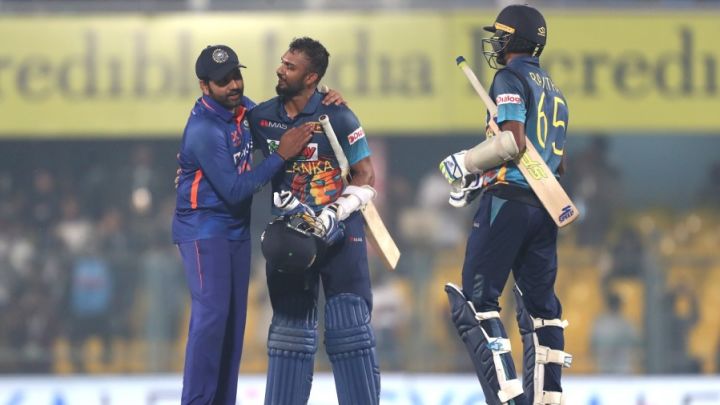Non-striker run outs and catches close to the ground shouldn't be as complicated as they are
Running out a batter who is leaving his crease early is fair, period. And so-called bump catches ought to be ruled on by the on-field umpires

Two major sources of cricket controversies - run outs at the bowler's end and catches referred to the third umpire - have reared their ugly heads again.
Run outs at the bowler's end can and should be resolved easily. The original law was more than adequate and should never have been changed. It's a reminder that there are generally two solutions to a problem - a simple one and a complicated one. Cricket is renowned for choosing the latter.
Attempting a run out at the bowler's end without warning a batter is not unsporting. Appealing for a catch that a fielder knows he has caught should not be subjected to crowd booing as it's legal.
In the Guwahati game against Sri Lanka, I'd have preferred if the India captain, Rohit Sharma, had enforced, rather than rescinded, the run-out appeal against his opposite number Dasun Shanaka. As I said to R Ashwin during India's 2020-21 tour: "Keep mankading batsmen until they finally work out that what they are doing is illegal."
Ashwin ran-out Jos Buttler at the bowler's end in a 2019 IPL game. His actions - which should have been applauded - were widely decried and even described as "contrary to the spirit of the game" by the MCC.
How could it be against the spirit of the game when it's legal according to cricket's laws? Why is the bowler regularly admonished by the public and often booed for cheating when it is the batter who is trying to gain an advantage?
If a batter backs up as he should - watching the bowler's hand with his bat in the crease and only leaving when the ball is actually delivered - he won't be run out. In the process he may also gain some information that will help when he is at the striker's end later, facing that same bowler.
Bowlers should be able to bring their arm over without releasing the ball and then break the stumps to effect a run out. This was correctly allowed under the old law. If batters were run out under that law, they would quickly learn to back up legally.
An honest fielder knows when he has caught the ball. There are certain indicators an umpire needs to consider before he makes his decision - a ball that bounces goes straight into the palm rather than lodging in the fingers first
In a game more than a decade ago, England appealed for a catch against a Sri Lanka batter at one point. A number of English commentators bemoaned the not-out decision made by the Sri Lankan video umpire, and the next morning Tony Greig re-enacted a fair catch from the same on-field position.
The various cameras collected shots of Greig's re-enactment and despite him depicting a fair catch, from some angles it appeared as a bump ball. As this case showed, a picture doesn't always tell the truth.
Greig's well-thought-out move should have put a definite end to catch replays being sent to the third umpire. At the same time, administrators ought to have let it be known and widely circulated among the media that on-field umpires would in future adjudicate on catches. However, this move was never made and catches close to the ground are still referred to the third umpire. Surprise, surprise, there were three such referrals in the SCG Test between Australia and South Africa and all of them created controversy.
An honest fielder knows when he has caught the ball. There are certain indicators an umpire needs to consider before he makes his decision - a ball that bounces goes straight into the palm rather than lodging in the fingers first, for instance. An umpire should also be aware of a fielder's trustworthiness and this should be considered when making a decision.
Each administration needs to ensure team captains are aware of their responsibility to make sure the fielding side behaves with integrity.
Umpires should be making the on-field decisions about catches and not referring them to - in this case - an unreliable video system. Umpires already give a soft signal, so why shouldn't they actually make the decision?
There is already enough controversy surrounding the game of cricket without the administrators unnecessarily contributing to the drama.
Former Australia captain Ian Chappell is a columnist
Read in App
Elevate your reading experience on ESPNcricinfo App.